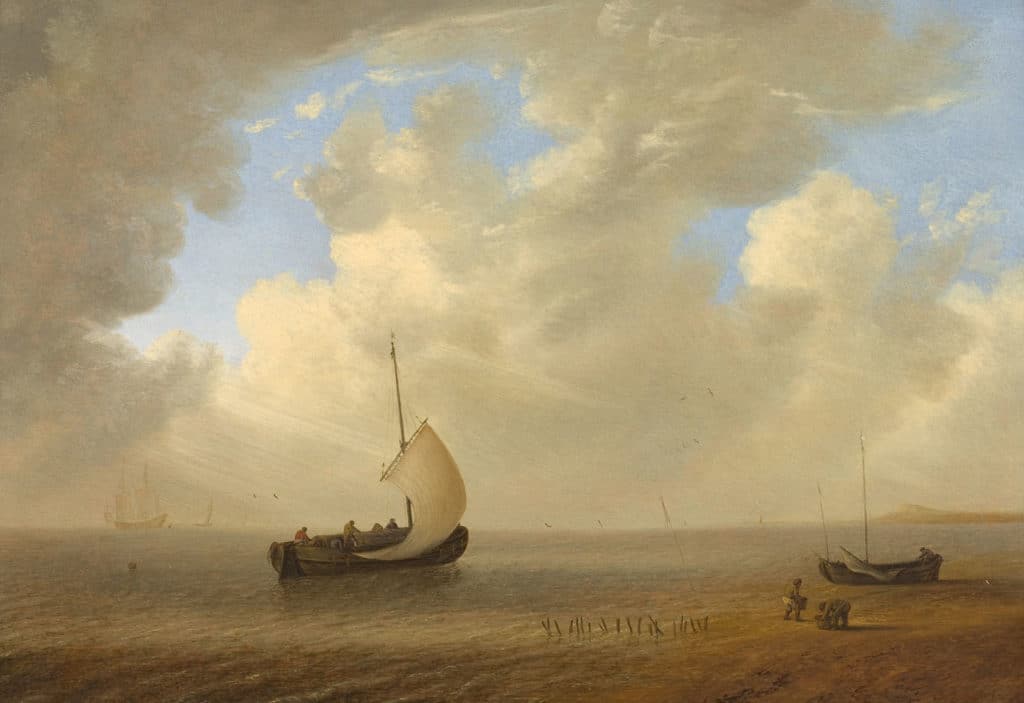[LUM#4] The museum goes fragrant
Making a perfume the link between a painting and museum visitors is the challenge taken up by students from the Faculty of Science. Or when art meets science to the delight of the public.

It's a seascape like thousands of others, one of many illustrations of a theme dear to the golden age of Dutch painting. At first glance, there's nothing very original about this work immortalizing the return of fishermen on a calm morning along an anonymous coastline. On closer inspection, however, the scene is not lacking in charm, with its bewitching light, its skilfully orchestrated interplay of light and shadow, its golden-brown sand plunging into translucent waters... And then there's the omnipresent sky, which we can't quite tell whether it heralds the beginnings of a storm or a return to calm after a night of heavy weather.
This scene, taken from a painting on wood by Wilhem Van Diest (1600-1678) was, among other works in the Fabre museum, at the heart of a project led by students in the Master's program in Cosmetics, Flavors and Fragrances Engineering. Their challenge: retranscribe the atmosphere of a painting with a fragrance of their own creation. For Julia Prats, who worked with 3 of her classmates on "Marine par temps calme", the challenge was to avoid the pitfall of an overly literal reading: "We didn't want to create something that would be too marine, too iodized..." she explains.
Cottony atmosphere, sunny notes and warm sand...
"Above all, we sought to retranscribe the cottony atmosphere of the sky, the contrast between the transparency of the water and the heavy, humid atmosphere of the painting, but also its very airy dimension, which inspired a solar note in our composition". There's an undeniable poetry in this way of probing the soul of the work, in this way of evoking the "smell of warm sand" that Julia Prats speaks of. The student admits that the creative process was "less methodical than creative". But chemistry is never far away. It was by skilfully blending synthetic materials that these apprentice perfumers succeeded in giving the work its olfactory identity. "Once the desired note had been obtained, it had to be adapted and placed in a solvent, with the particular constraint that the perfume had to be diffused in the space..." continues Julia Prats.
Presented at the Musée Fabre's student nocturne, their fragrance also enabled a specific audience - the visually impaired - to enter the world of painting. And with great success. "We asked them to describe how they felt about the fragrance, and thanks to their senses and hyper-developed imaginations, some of them were able to describe the painting precisely..." recounts the student who has since flown to Grasse, the perfume capital, to practice what is perhaps the most delicate of scientific professions.
UM podcasts are now available on your favorite platforms (Spotify, Deezer, Apple podcasts, Amazon Music...).